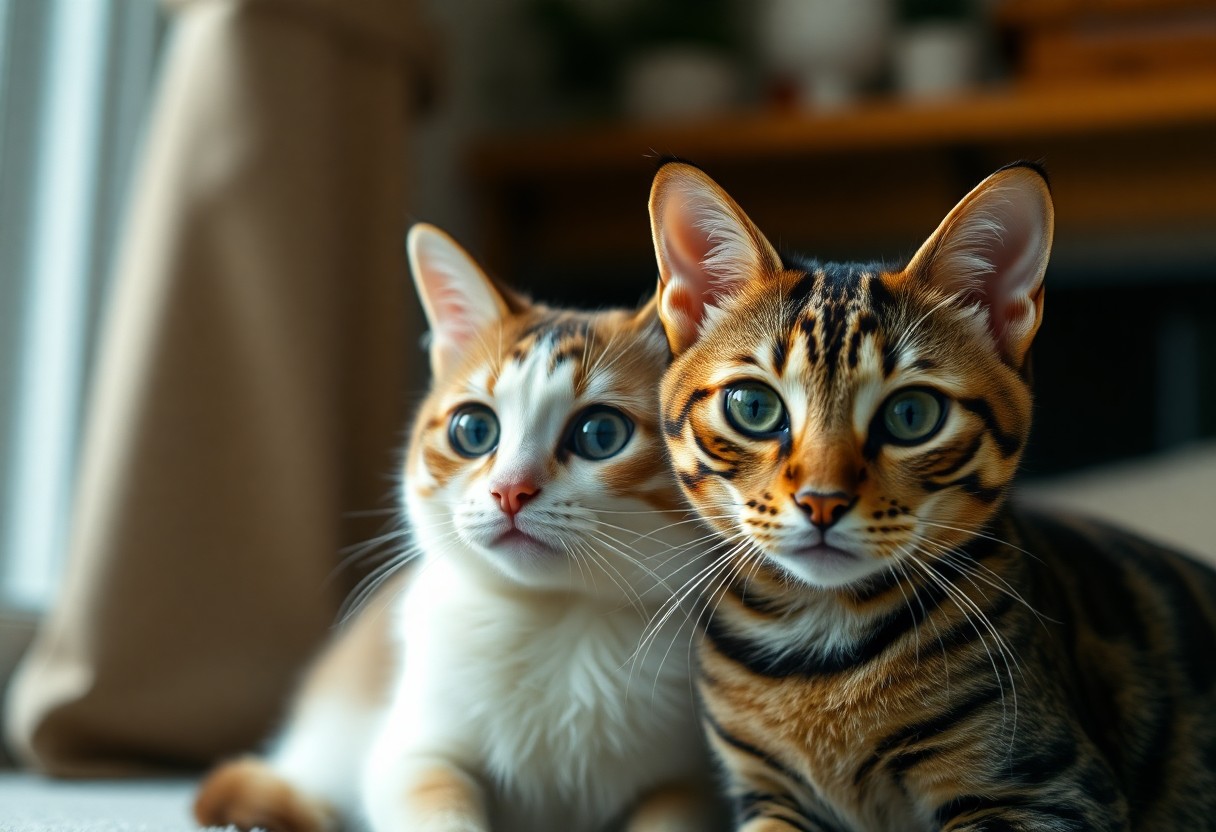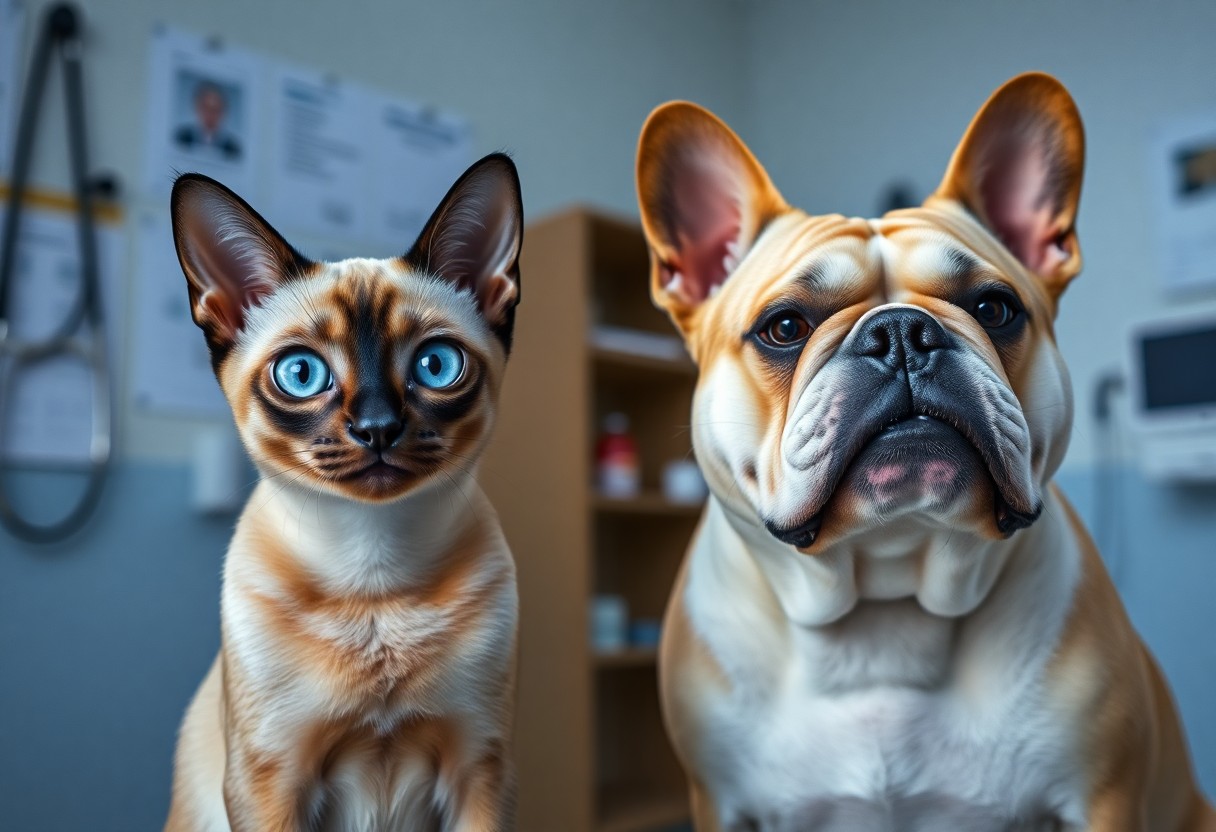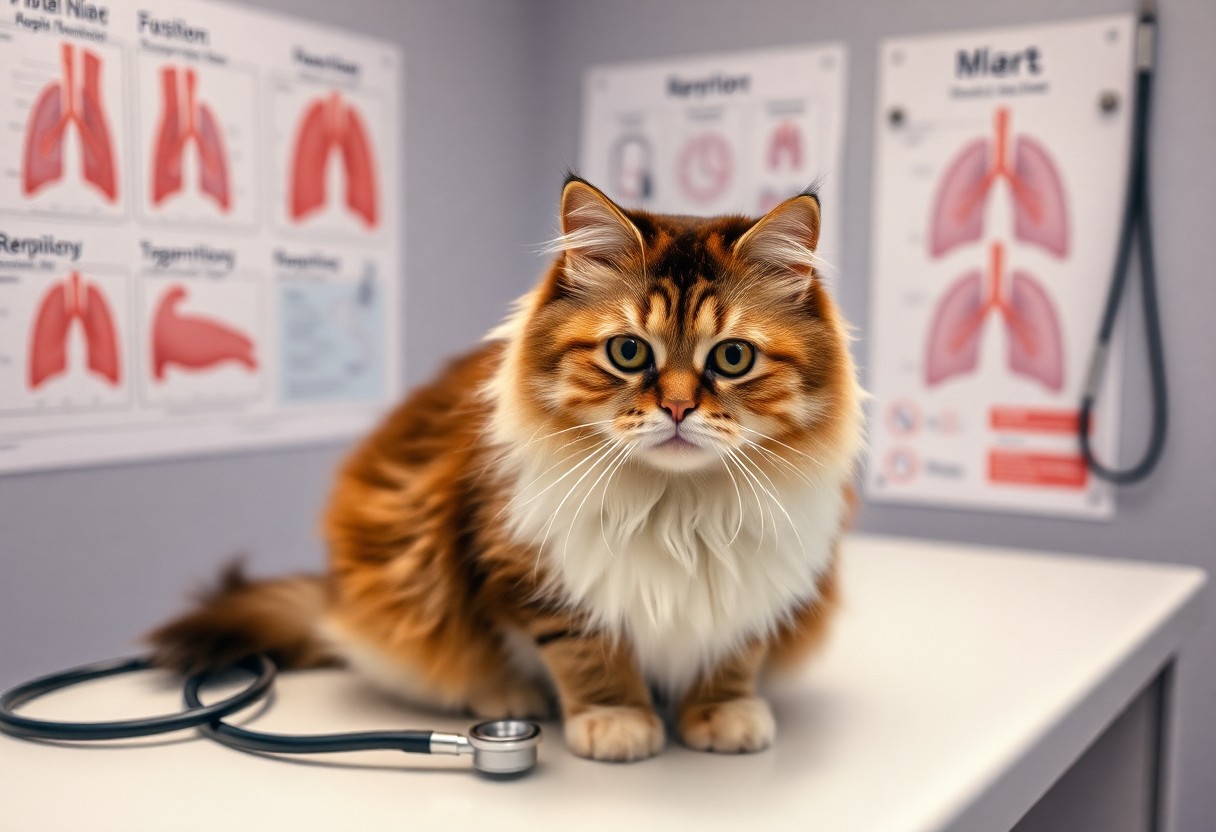Most cat owners may not realize that certain cat breeds are predisposed to breathing issues due to their anatomical features, particularly brachycephalic breeds like Persians and Bulldogs. These breeds can suffer from serious respiratory problems that impact their quality of life. By understanding the common causes and recognizing the signs, you can take proactive measures to ensure your furry friend remains happy and healthy. This guide will explore the underlying factors contributing to these issues and provide practical tips for managing your cat’s health effectively.
Understanding Cat Breathing Issues
Cat breathing issues can range from mild to severe, significantly affecting your feline friend’s quality of life. Recognizing the signs of respiratory distress early allows for timely intervention. Symptoms may include wheezing, coughing, or labored breathing. Additionally, factors such as environmental stressors or underlying health conditions may exacerbate these issues. Understanding these aspects is vital for keeping your companion healthy.
Common Breathing Conditions
Several breathing conditions frequently affect cats, particularly those with flat-faced breeds. Chronic nasal congestion, bronchitis, and feline asthma are among the most prevalent. You may notice your cat exhibiting irregular breathing patterns, which can indicate these conditions. Close observation is crucial for identifying when your pet requires veterinary attention.
Genetic Factors in Breathing Problems
Certain breeds, such as Persians and Bullies, face a higher risk of genetic breathing issues due to selective breeding practices that prioritize physical traits. These genetic predispositions can lead to brachycephalic airway syndrome, characterized by narrowed nostrils and elongated soft palates. This increases the chances of respiratory problems as they grow older.
- genetic predisposition
- bred traits
- breathing difficulties
- selective breeding
This highlights the importance of understanding the specific risks associated with your breed.
The genetic makeup of certain cat breeds may not only influence physical appearance but can also result in significant health complications. For example, the Siamese and Persian cats often inherit traits linked to respiratory issues, which may become chronic. These conditions typically arise from anatomical changes that affect airflow, making vigilant monitoring and proactive veterinary care vital for affected breeds.
- genetic health risks
- anatomical changes
- airflow issues
- chronic problems
This emphasizes why early awareness and intervention for your breed are paramount.

Specific Cat Breeds Prone to Breathing Issues
Certain cat breeds are more susceptible to breathing challenges due to their physical characteristics and genetic predispositions. You may find that brachycephalic breeds like Persians and Bulldogs often struggle with respiratory problems. Additionally, breeds with elongated bodies and narrow airways, like the Siamese and Burmese, may also face issues. Understanding these predispositions can help you monitor your pet’s health more effectively.
Flat-Faced Breeds
Flat-faced breeds, or brachycephalic cats, such as the Persian and Himalayan, often experience breathing difficulties due to their shortened nasal passages. This anatomical structure can lead to obstructed airflow, resulting in symptoms like snoring, difficulty breathing during exertion, and increased respiratory infections. Regular veterinary check-ups can help manage these risks effectively.
Other Breeds with Respiratory Concerns
While flat-faced breeds are well-known for breathing issues, other cats like the Oriental Shorthair and British Shorthair can also face respiratory problems. Factors such as obesity or underlying health conditions, like asthma, can exacerbate breathing difficulties in these breeds. Paying close attention to symptoms and maintaining a healthy weight is vital for their well-being.
The British Shorthair, for instance, is prone to obesity, which can lead to respiratory strain. Similarly, theOriental Shorthair may develop asthma, making it vital for you to identify early signs like coughing or wheezing. Regular veterinary checks and a balanced diet play a significant role in managing these respiratory concerns. Ensuring that your cat maintains a healthy weight and receives proper care can significantly improve their quality of life.

Signs of Breathing Issues in Cats
Being aware of your cat’s respiratory health is crucial for their well-being. Watch for signs such as labored breathing, which can manifest as rapid or shallow breaths, and listen for any unusual noises like wheezing or coughing. Pay attention to changes in behavior, like decreased activity or reluctance to eat. Additionally, monitor for any visible signs of distress, such as pawing at the face or vocalizations that seem out of the ordinary. These indicators often point to underlying respiratory issues requiring your immediate attention.
Recognizing Symptoms
Common symptoms of breathing issues in cats include open-mouth breathing, excessive panting, or a noticeable increase in respiratory effort. You may notice your cat sitting in a strange posture, such as leaning forward with their neck extended, which indicates they are trying to open their airways. Assessing their respiratory rate—ideally around 20 to 30 breaths per minute when resting—can also help you identify abnormalities.
When to Seek Veterinary Care
Prompt veterinary care is vital if you notice your cat exhibiting signs of breathing difficulties. Arranging an appointment becomes necessary if your cat struggles to breathe, shows indications of distress, or develops a persistent cough. Additionally, fainting, lethargy, or blue-tinged gums signify a critical condition that warrants immediate attention.
Delaying veterinary care can lead to severe consequences, as respiratory issues may escalate quickly. For instance, feline asthma can worsen rapidly, causing long-term damage if not treated promptly. If your cat exhibits symptoms such as wheezing or distress while breathing, getting them assessed can prevent more serious health complications. Always trust your instincts; if something feels off with your cat’s breathing, seeking a professional evaluation is the prudent choice.

Prevention and Management Strategies
Effective management of breathing issues in cats requires a multi-faceted approach that combines environmental modifications and regular health monitoring. By prioritizing your cat’s respiratory health through these strategies, you can help mitigate potential complications and enhance their quality of life.
Environmental Considerations
Optimizing your cat’s environment plays a significant role in easing breathing difficulties. Ensure that your home is free from irritants like smoke, strong perfumes, or excessive dust that can aggravate respiratory problems. Additionally, maintaining a comfortable temperature and humidity level can support their breathing, especially in vulnerable breeds.
Regular Veterinary Check-ups
Scheduling regular veterinary check-ups is vital for identifying and addressing any respiratory issues early on. During these visits, your veterinarian will conduct a thorough evaluation, which may include listening to your cat’s lungs, performing blood tests, or even recommending imaging studies to assess their respiratory health.
Routine examinations typically occur at least once a year but may need to be more frequent for breeds at higher risk for breathing problems, such as Persians and Bulldogs. Your veterinarian can provide personalized advice based on your cat’s specific needs and may recommend preventive measures such as weight management, dental care, and vaccinations that protect against respiratory infections. Staying proactive about your cat’s health can lead to early detection of issues and a better overall prognosis.
Treatment Options for Affected Breeds
Treatment options for cats with breathing issues primarily focus on alleviating symptoms and addressing underlying causes. Regular veterinary check-ups allow for early detection and intervention, ensuring your cat receives appropriate care. Lifestyle adjustments, such as maintaining a smoke-free environment and managing weight, can significantly improve respiratory health. Additionally, specific therapies may be recommended based on your cat’s individual needs and breed predispositions.
Medical Treatments
Medical treatments for breathing issues often include anti-inflammatory medications, bronchodilators, and sometimes antibiotics if an infection is present. Your veterinarian may prescribe corticosteroids to reduce inflammation in the airways or use inhalers designed for felines. It’s crucial to follow your vet’s guidelines to maximize the effectiveness of these treatments and monitor your cat for any side effects.
Surgical Interventions
Surgical interventions may be necessary when anatomical abnormalities are the primary cause of breathing difficulties. Procedures can range from soft palate resection to standing everted laryngeal saccules, tailored to your cat’s specific condition. Your veterinarian will evaluate the severity of the issues and recommend surgery if it promises to improve the quality of life significantly.
Surgical options can resolve obstructive issues that contribute to breathing problems, especially in brachycephalic breeds. For example, a soft palate resection involves removing excess tissue that interferes with airflow, which can enhance breathing and reduce snoring. Post-surgery, many cats experience marked improvements in respiratory function, leading to a more active life. Consulting a veterinary surgeon specialized in these procedures is vital to ensure a successful outcome and manage any potential risks associated with surgery.
Responsible Pet Ownership
Owning a cat requires a commitment to their well-being, especially for breeds prone to breathing issues. Being a responsible pet owner involves regular veterinary check-ups, maintaining a healthy environment, and being proactive about your cat’s health. By understanding your cat’s unique needs, you can provide the best care possible and ensure a better quality of life for your feline friend.
Educating Yourself on Breed Characteristics
Understanding breed-specific traits significantly impacts your ability to care for your cat. Certain breeds, like Persians and Himalayans, commonly exhibit brachycephalic characteristics leading to breathing difficulties. Acquainting yourself with these traits can help you recognize early signs of respiratory distress and seek prompt veterinary care, ensuring your pet’s health is prioritized.
Making Informed Decisions
Informed decisions regarding pet ownership can prevent serious health issues down the line. Knowing about a breed’s predispositions allows you to assess your lifestyle compatibility and prepare for potential health challenges associated with certain breeds. This knowledge not only aids in choosing the right pet but also enhances your pet’s overall welfare.
Consider that some breeds may require additional care, such as regular grooming or special diets to mitigate health risks. Conducting thorough research on your potential pet can reveal necessary modifications to your living space or routine that can accommodate their unique needs. Being aware of these factors—and planning ahead—can lead to a more harmonious relationship and fewer health concerns.
FAQ
Q: Why do some cat breeds have breathing issues?
A: Certain cat breeds, particularly brachycephalic breeds like Persians and Bulldogs, have shorter skull structures which can lead to obstructed airways and breathing difficulties.
Q: What are common breathing problems in these breeds?
A: Common issues include snoring, wheezing, open-mouth breathing, and exertional dyspnea, which may arise from narrowed nostrils or elongated soft palates.
Q: How can I identify if my cat has breathing problems?
A: Signs of breathing issues include labored breathing, excessive panting, lethargy, and changes in appetite or behavior. Monitoring these signs can help in early detection.
Q: What preventive measures can I take for my cat?
A: Keeping your cat at a healthy weight, avoiding extreme temperatures, using air conditioning, and scheduling regular veterinary check-ups can reduce the risk of breathing issues.
Q: What should I do if my cat exhibits breathing problems?
A: Seek veterinary attention immediately if your cat shows severe difficulty breathing, as prompt medical care is vital for their health and safety.

